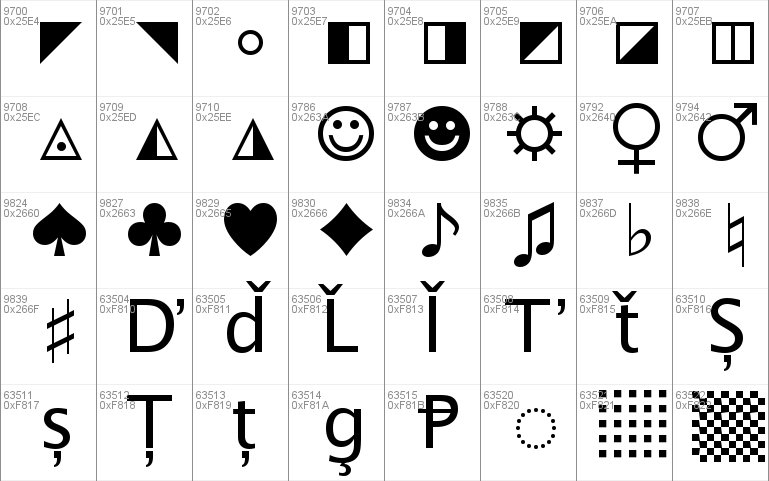

Partly it’s fashion, partly it’s technology, and partly it’s the function. There are great fonts for different purposes. “Lucida” comes from the Latin word lux for light and clarity. We called our font “Lucida” to suggest it was made out of light and clear. We thought the old types never looked right for printing on low-resolution laser printers. Kris and I designed a typeface in 1977 called Leviathan for a special edition of Moby Dick, but our first digital type was Lucida, released in September of 1984, when I was 39.
#FONTS MOST SIMILAR TO LUCIDA SANS UNICODE LICENSE#
It’s like publishing - you design a type, and a company may or may not license it and sell it. What were you and Kris hoping to achieve? I thought, “This is the future.” Tell me about developing Lucida. Later, when I taught at the Rhode Island School of Design, I took summer night classes at Harvard to study computing. My love of science always made me ask, Why? Why do we think one thing is more beautiful than another? So, I began to study that. People had spent thousands of years working out different ways to write. To him, writing beautifully was part of civilization. I went to Reed College in Oregon, which was sort of the opposite of Cranbrook - it was noted for its liberal nature - and I had a graphic arts teacher, Lloyd Reynolds, who was a calligrapher. The Detroit News had a writing contest for high school students, and I won the grand prize: a typewriter. I learned a lot, but Cranbrook was very restrictive and I wasn’t learning the way I liked. When I was a sophomore in high school, I became rebellious. What inspired your fascination with fonts? At home, my parents gave me Little Golden nature books, and because I read through them so fast, they gave me a junior membership to the Institute of Science. My dad was an amateur artist and would take me to the art museum, and we would look at paintings and other works together. What I remember with most pleasure about growing up were two nearby museums, the Cranbrook Institute of Science and the Cranbrook Art Museum. My parents sent me to Cranbrook because I loved science. After that, we moved to a small neighborhood in Beverly Hills. In a way, it was an introduction to a world that was on its way out. In the wintertime, we’d go on sleigh rides pulled by my grandpa’s dappled white and gray horses. My first memories are of the countryside. Hour Detroit: What are some of your memories from growing up in Michigan?Ĭhuck Bigelow: Until I was 3, my parents and I lived on my grandparents’ farm on Wattles Road in Troy. But before he rose to prominence as a type historian, educator, and creator, Bigelow was a native of Troy and a precocious Cranbrook student whose curiosity often led him to rebel against the institution’s regimented ways.īigelow, now 76 and writing a book called Our Work about his and Holmes’ body of font work, talked to Hour Detroit about his Michigan roots, how his love of writing and science led him to typography, and what qualities make a great font. The duo’s goal was to make text easy to read in a lower-tech era of printing.Īt the time he co-designed Lucida and several other font families, Bigelow was a typography professor at Stanford University and a recent recipient of the prestigious MacArthur Fellowship, aka the Genius Grant. The name is intended to evoke the typeface’s lucidity it’s known for clear lines and legibility as well as tall lowercase letters. He and his partner in typography, Kris Holmes, released the font in 1984.

Or, as you probably are more familiar, Lucida Sans, Lucida Bright, and Lucida Sans Unicode. Most font fanatics - yes, they exist - know Chuck Bigelow is the man behind one of the oldest typeface families still in use: Lucida.


 0 kommentar(er)
0 kommentar(er)
